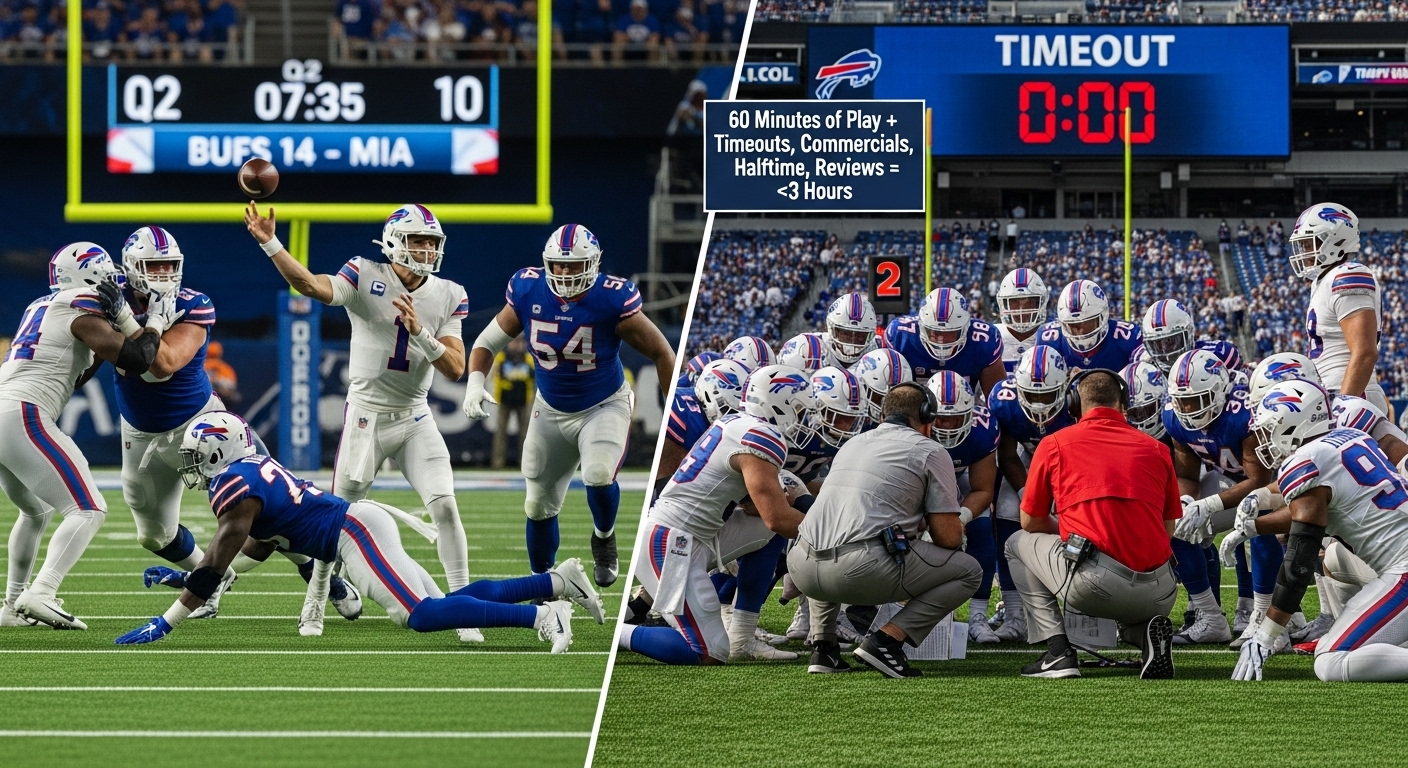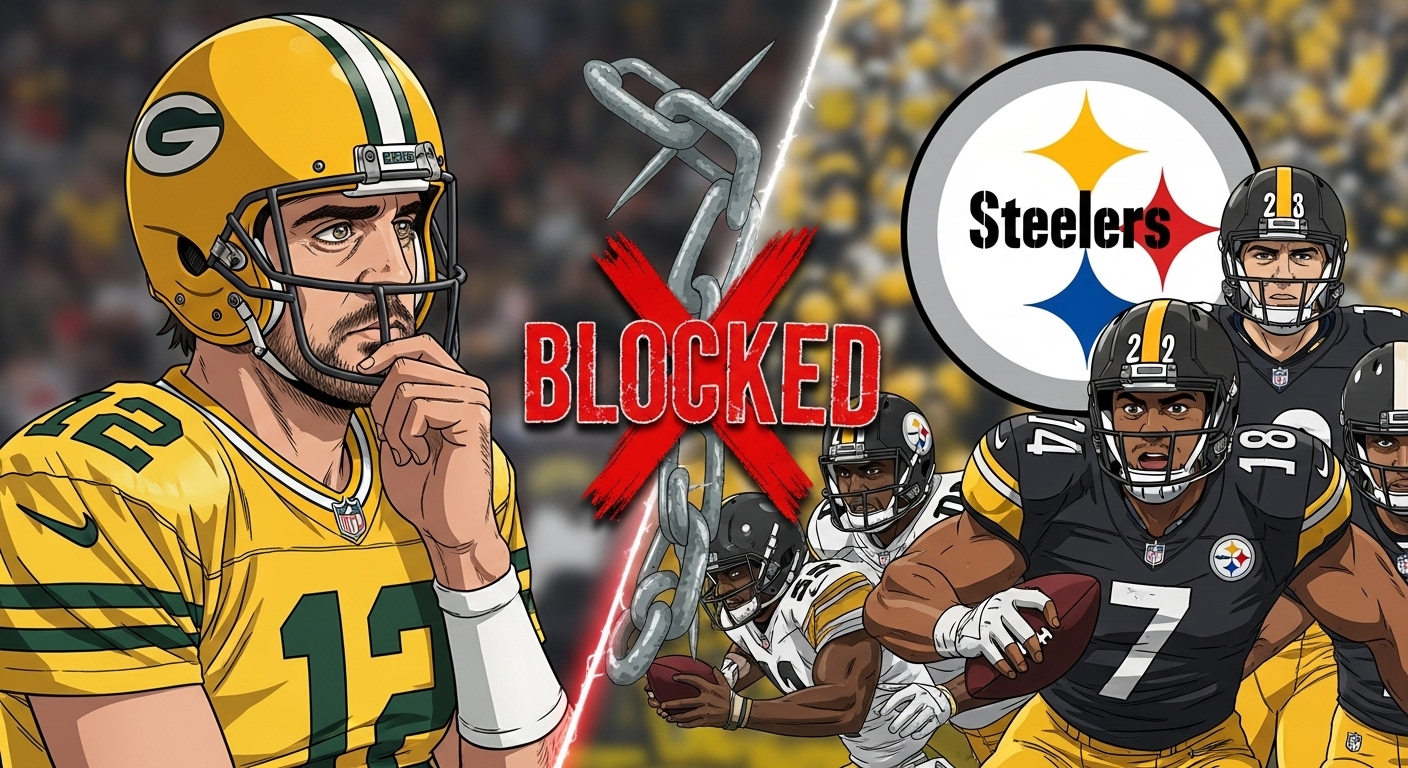As a stat nerd who’s timed and charted hundreds of games over 12+ seasons, here’s the quick answer you want: an NFL game takes about three hours end-to-end, even though the clock only says 60 minutes. If you’re asking how long is a football game because you’re planning snacks, rides, or bathroom breaks, plan for three.
Maybe more with overtime, TV timeouts, and halftime. That’s true for most NFL game length questions. College football? Often 3 to 3.5 hours. High school? Around 2 to 2.5. Simple, but not simple. Overtime, replay reviews, the play clock, penalties… they all stretch time like taffy.
The short answer you actually wanted
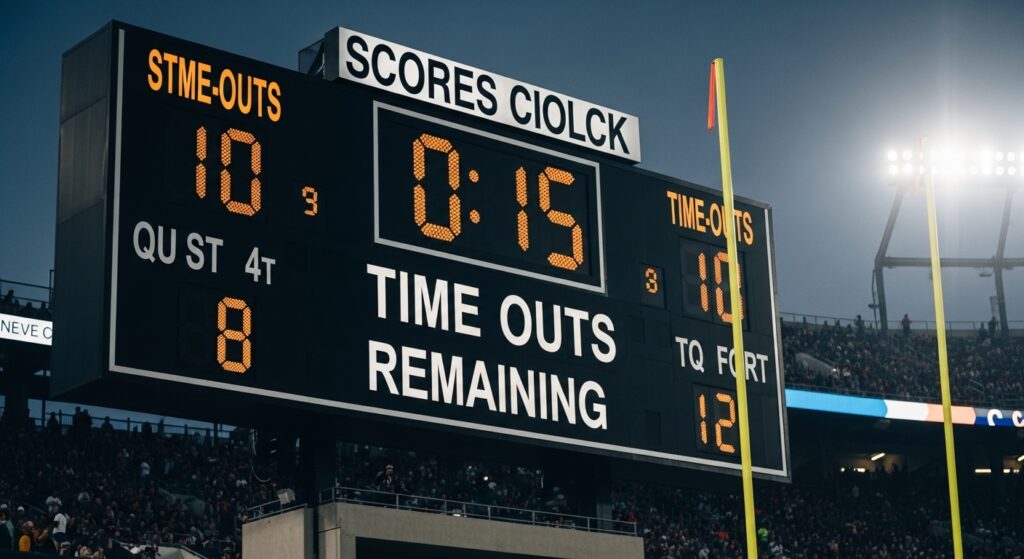
- NFL: 60 minutes of game clock. Usually 3 hours real time.
- College football: Similar clock, often longer. Around 3–3.5 hours.
- High school: 48 minutes game clock. Usually about 2–2.5 hours.
- Overtime: Adds 10–30+ minutes depending on rules and chaos.
When I host friends for the Big Game, I block off 3.5 hours, minimum. It pairs well with playing a little numbers game like Super Bowl squares (best numbers, rules, payouts), because yes, there’s time between drives. Plenty.
Why three hours for “60 minutes” of football?
I’ve always found the real-time stretch comes from three buckets: stops, breaks, and delays. Clock stops for incomplete passes and out-of-bounds. TV breaks shove in ads. Delays arrive with penalties, reviews, injuries. Each thing is tiny. Together they eat your evening.
What stops the clock (and for how long it feels)
- Incomplete pass: Clock stops, then starts on snap. Repeat that six times on a drive and you feel it.
- Runner goes out of bounds: Clock pauses. Starts on ready or snap depending on level and period.
- Penalties: Administration + discussion + the walk-off. Add 30–60 seconds, sometimes more.
- Replay review: 60–180 seconds. Occasionally longer if the angles are spicy.
- Two-minute warnings (NFL): Built-in stop, two per game.
- Timeouts: Three per half per team. That’s up to 12 per game, if used.
- Halftime: NFL ~12–13 minutes. College often 20. Marching bands need love too.
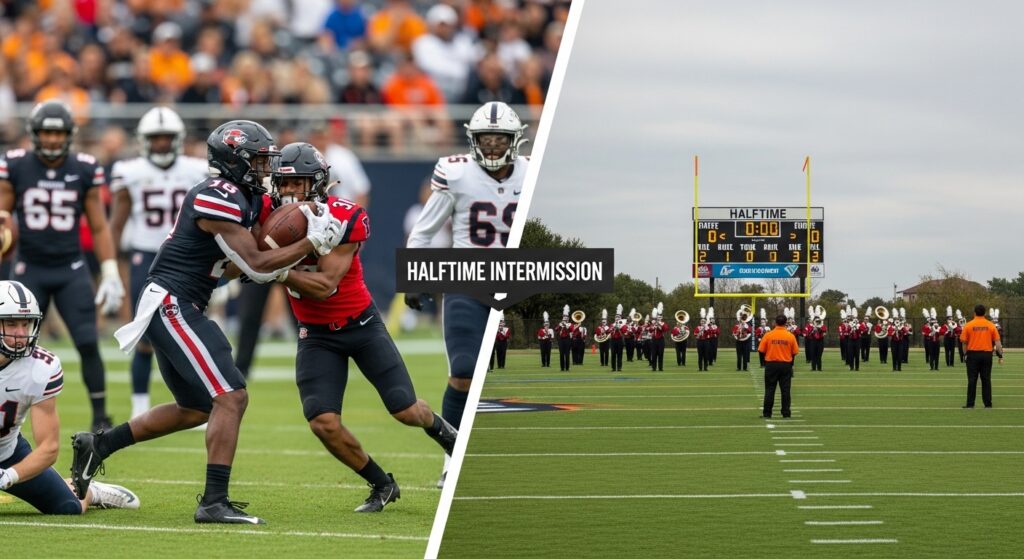
Actual rules, not just vibes
If you’re the “show me the receipts” type, the timing mechanics live in the league’s book. I keep this bookmarked because I’m that person who pauses broadcasts to count play clock resets: 2024 NFL Rulebook (timing rules).
Overtime: where schedules go to die
Overtime changes the calendar. A lot.
- NFL regular season: One 10-minute OT. Possession rules are weirdly specific. Ties can still happen.
- NFL playoffs: No ties. Both teams can see the ball. Buckle up.
- College: Alternating possessions from the 25. Starting with the third OT, it turns into two-point try shootouts. Fun. Chaotic.
- High school: Usually like college, but varies by state.
Quick comparison “table” because I care about your calendar
| Level | Quarter Length | Halftime | OT Format | Typical Real-Time Duration |
|---|---|---|---|---|
| NFL | 15 min x 4 | ~12–13 min | 10-min period (regular season); no ties in playoffs | ~3:00 |
| College | 15 min x 4 | ~20 min | Alternating 25-yard possessions; 2-pt tries from 3rd OT | ~3:15–3:30 |
| High School | 12 min x 4 | ~12–15 min | Varies; often alternating possessions | ~2:00–2:30 |
I rant a lot about third downs because that’s where games breathe, stall, or sprint. When I looked at Browns vs Seahawks red zone and 3rd down stats, the drive length story was obvious. Sustained drives stretch real time. Three-and-outs don’t.
What I do when I need the quick end-time
In my experience, kickoff plus 2 hours 50 minutes is a decent “no OT” estimate for the NFL. Add 15–20 if there’s a lot of passing or flags. Add 30 if the broadcast crew loves replay debates.
A sample NFL timeline
- 0:00–0:15: Early drives, a couple incompletions, first TV timeout.
- 0:15–0:30: End of first quarter. More ads.
- 0:30–1:05: Second quarter. Two-minute warning. Halftime incoming.
- 1:05–1:20: Halftime. Stretch. Snack. Hydrate.
- 1:20–2:45: Third and fourth quarters with 2–4 TV breaks each and a review or two.
- 2:45–3:05: If it’s close or OT. Otherwise, we’re already done.
If you like tracking how broadcasts change pace year to year (I do, I’m unbearable), bookmark the site’s sports trends feed. You’ll see when new rules tweak the clock and when TV production adds or trims breaks.
College football’s clock tweaks (and why Saturdays run long)
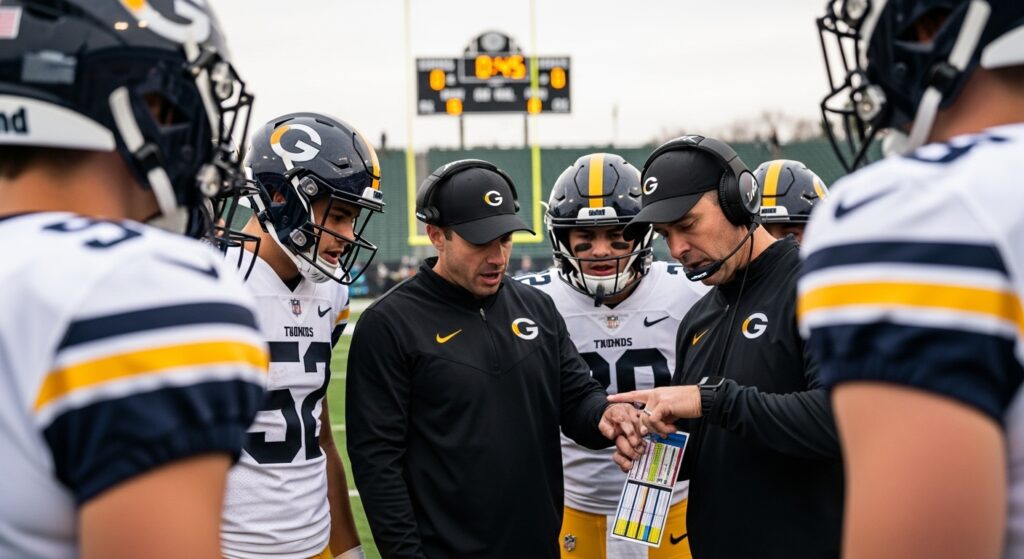
College has longer halftimes, more plays, and tempo offenses that either speed things up or create more stoppages. In 2023, the NCAA adjusted first-down timing so the clock doesn’t stop after first downs outside the final two minutes of a half. That shaved a few minutes, but not enough to make Mom happy if dinner is at six.
I follow line play and QB battles because they tell me if we’ll get balanced drives or a pass-happy slog. Stuff like the LSU depth chart (QB1 clues, O-line, freshmen roles) can hint at tempo and play-calling, which affects the pace more than people think.
High school games: friendlier for your bedtime
- Shorter quarters (12 minutes).
- Fewer TV timeouts (zero, usually).
- Running clocks in blowouts (mercy rules) that end things fast.
The rules rabbit hole, if you want it
For broader rule context, here’s the quick reference I send to family members when they ask “why did the clock start again?” during Thanksgiving: Rules of American football (overview).
“Football” vs football: if you meant soccer
If you meant soccer, that’s 90 minutes of regulation plus stoppage time. No TV timeouts. A tidy two hours in most cases, give or take extra time in tournaments.
| Sport | Regulation | Breaks | Typical Real-Time |
|---|---|---|---|
| American Football (NFL) | 60 minutes | Many (timeouts, reviews, TV) | ~3:00 |
| Soccer | 90 minutes | Halftime + stoppage time | ~1:50–2:10 |
If you want the formal soccer timing law, it’s here: IFAB: Duration of the Match. Very civilized. Very on time.
I cover more than football when I’m in data-goblin mode, so if you like comparing game lengths across leagues and seasons, peek at our multi-sport news section. It’s where I stash cross-sport timing oddities.
Stuff that secretly makes games longer (or shorter)
- Pass-first offenses: More incompletions, more clock stops.
- Officiating styles: Some crews call more flags. That adds minutes and mileage for your patience.
- Replay culture: Prime-time games push the envelope on angles and debates.
- Blowouts: Running game, fewer timeouts. Ends quick.
- Close games: Clock management, timeouts, and kneel-down chess. Longer.
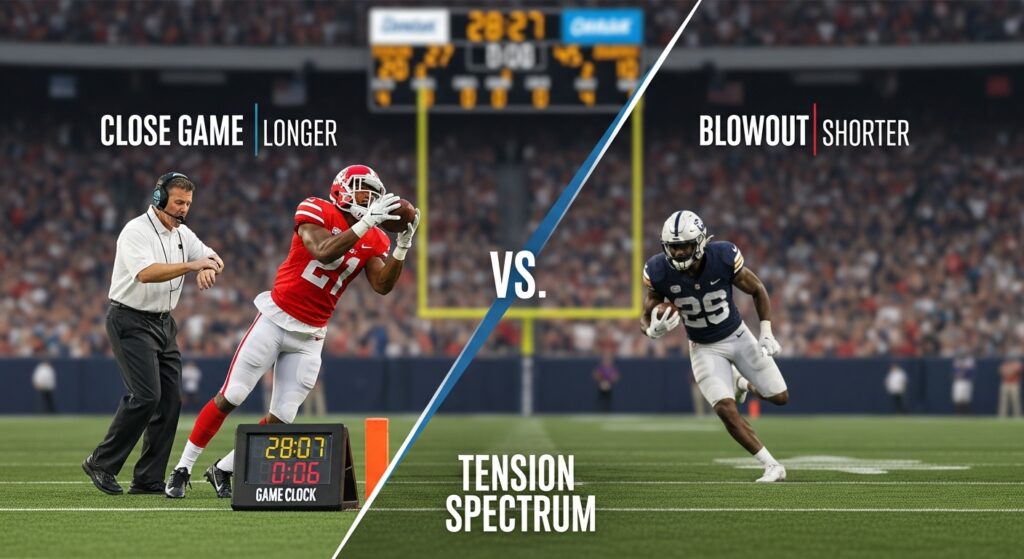
Bathroom break cheat sheet
- Right after a touchdown before the kickoff. You’ve got 90–120 seconds.
- Start of halftime. Obvious, but it’s the longest window.
- Injuries and long reviews. If they’re rolling eight replays, you’re safe.
So, how long will tonight’s game be for me?
- If it’s two defensive teams who run the ball: 2:45–3:00.
- Two air-it-out offenses with lots of incompletions: 3:10–3:25.
- National TV game with dramatic reviews and a late comeback: 3:20–3:40.
And yes, ask me “how long is a football game” at a party and I’ll still say, “Three hours-ish, unless the universe is mischievous.” It’s not art. It’s math. With commercials.
Frequently Asked Questions
Does the clock stop on every first down?
In college, it stops until the chains reset but not outside the last two minutes of a half (newer rule). In the NFL, it doesn’t stop just for a first down.
Why does a two-minute drill take 15 real minutes?
Clock stops, timeouts, sideline throws, spikes, reviews, and a lot of commercials. It’s efficient chaos.
Is halftime always the same length?
NFL is usually around 12–13 minutes. College is closer to 20. Special events or ceremonies can stretch it.
Do more penalties mean a longer game?
Usually, yes. Penalty discussion + enforcement + extra plays equals more minutes. You’ll feel it in the third quarter.
Can I watch just the last quarter and get the gist?
Most of the drama lives there, but you’ll miss adjustments and injuries that explain the ending. Still, if you’re short on time, the fourth is the high-yield part.
One last tiny thing
If you’re timing your Sunday around kickoff, I set my mental clock the same way I set my oven: a little early and forgiving. And if you want to see where the sport is drifting, I post my timing notes and oddities in, yes, way too much detail. But you knew that already.

I’m Oliver Scott, and I live to bring every sports moment to life. Get breaking multi-sport news, in-depth match highlights, fantasy tips, athlete spotlights, and the latest trends right here.

